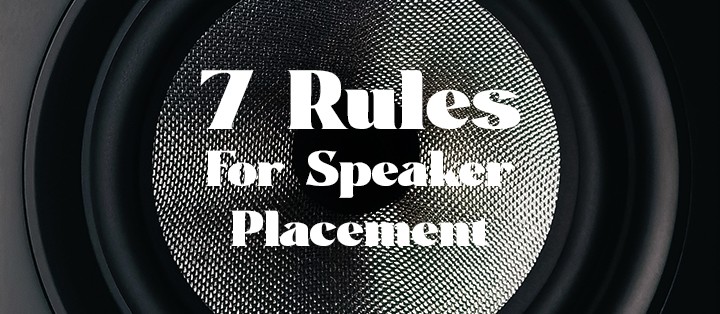
So you've taken a big step in your music production journey, and decided to get a proper pair of studio speakers. Congratulations, you're about to level-up the quality of your music!
However, there's one very important (and often over-looked) question you need to ask yourself before you plug in and play: "where exactly should I put my speakers?"
Before you bought them, you probably already knew which room you planned on putting them in - most likely a bedroom or spare room - but did you think about where they ought to be positioned in that room?
The positioning of your speakers, in relation to each other, the different room surfaces, and to your ears, is hugely important in getting an accurate representation of your sound, both in terms of frequency response and stereo imaging.

It's also worth pointing out that another aspect of creating an accurate monitoring environment is acoustic treatment - the use of materials to absorb or diffuse problematic frequencies.
Acoustic treatment is a subject that warrants an entire book, so in this article we'll focus solely on speaker placement, outlining 7 general rules that should help you make better decisions about how to set them up in your particular room.
With all of these rules, the size and dimensions of your room will determine how well you're able to follow them; and even if you can't, it's still very useful to know how the sound coming out of your speakers is being affected by speaker positioning.
Rule 1: Set Your Listening Position 38% of the Way Into the Room
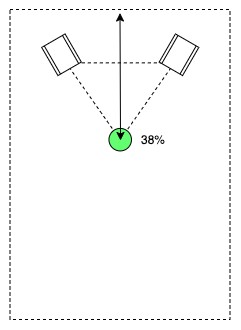
Before you even place a speaker, you should establish arguably the most important position of all - you! Don't forget that where you are (and your ears in particular) in relation to your speakers is key to what you hear.
It is generally assumed that most people will be working within a rectangular room, so you will often see this '38% down the room's length' advise mentioned in articles on the topic. The reason for this is to avoid sitting at the centre of the room, where phase cancellation can occur in lower frequencies.
The bass also tends to behave better down the length of the room, as the waves have more space to disperse.
Avoid using a cube-shaped room if you can, as the sound waves reflecting off the equal dimensions of the room will cause certain frequencies to be very loud, and others very quiet. This problem still occurs in most room shapes, but in a cube the same issues are exacerbated.
Rule 2: Form An Equilateral Triangle Between Your Speakers and Head
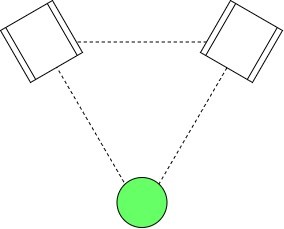
This may be the most universal rule that applies to all studio setups, and you'd be hard pressed to find anyone who disagrees with it, as it forms the basis of creating an accurate 'soundstage' in your room.
Of course, the size of your room is going to determine exactly how big this triangle will be, as will the other factors mentioned in this article - but once you've set your listening position, you should be able to envisage a starting point to work with at least.
Those of us working in very small rooms need to be wary of compromising the stereo image by forming a smaller triangle with the speakers closer to each other. That said, Four Tet once shared on image on social media of a very simple bedroom setup with speakers close together, right in front of a window.
If the pros can do it like this, then there's no reason that you can't either (although you wouldn't want to go much closer than this!)
Once you have your equilateral triangle set up, it's also a good idea to adjust the angle ('toe-in') of the speakers so that they are pointing towards you.
As for the height positioning of your speakers - there's a bit of debate about whether it's the tweeters or woofers which should be at ear level. In any case, you don't want to be looking up or down on them - as long as they're roughly at ear height.
Rule 3: Avoid Placing a Speaker in a Corner
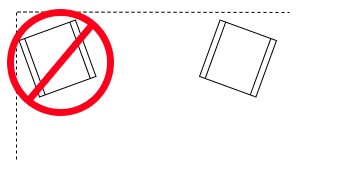
The corners of rooms are generally considered as problem areas in the context of a music studio. The corners are usually where you'd find acoustic treatment in the form of bass traps, as bass frequencies tend to gather at these spots.
Now imagine placing one of your speakers in a corner - the complex reflections combined with the direct sound from your woofer is going to cause huge increases in the perceived loudness in certain bass frequencies.
Determining the distance between the speakers and the wall behind them is a bit trickier. A distance of ~3ft / 1m is generally considered a healthy amount, however this is often not possible for many of us, due to space limitations.
As we move the speakers closer to the front wall, the early reflections can start to smear with the direct sound from the drivers, thus affecting transients and the stereo image. If we continue to move the speaker ever closer to the wall, this issue can be alleviated, BUT is replaced by a different issue - a boost in the bass.
So if you can't avoid placing your speakers in these positions, just be mindful of the ways in which it may affect the sound of your speakers.
Rule 4: Speaker to Side-wall and Speaker to Front-wall Distances Should Be Different
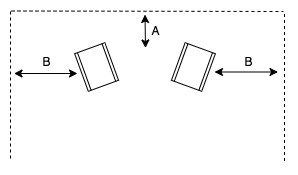
Another measurement we should be careful about is how the distances from different surfaces relate to each other.
After having set the position of our speakers from the front wall, we may want to check that this distance is not equal to the distance from the side walls.
If these distances do turn out to be equal, then there's the possibility for standing waves to occur, once again resulting in big build ups of bass frequencies.
Also notice from the diagram above how the speaker to side-wall distance is the same on each side. This concept of symmetry is important in designing and developing a monitoring environment for music. If these distances were different, then reflections arriving earlier from one side will likely disrupt the stereo image, skewing it either left or right.
Rule 5: Do Not Position Woofers Exactly Midway Between Floor and Ceiling!
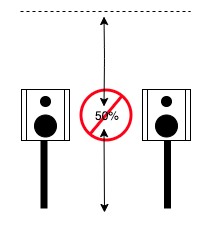
Again, the theory here is that placing your woofers at a mid-way point in the room will cause you to run into bass phase cancellation issues.
Similar to having the listening position at a node where a bass frequency can't be heard accurately, positioning a speaker in a similar problem area makes it difficult for it to push out that frequency.
But what happens if we've just set our speakers at ear level, and have now found out that the woofers are positioned mid-way between floor and ceiling?
If this is the case, it's probably better to keep your speakers where they are. After all, they are probably designed to be positioned at ear level, and what's more we can't say for sure how the materials in the floor and ceiling may be affecting the reflected sound waves.
If you want, you could always try raising your speakers slightly and pointing them downwards towards your ears. Make sure to test it against your previous configuration though to ensure you're not compromising the sound further.
Rule 6: Do Not Place Speakers On Their Side!
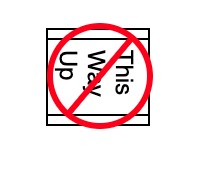
Let's face it, speakers look cool when placed on their side! However, if you're serious about getting an accurate sound in your studio, then you shouldn't be doing this unless the speakers are specifically designed that way.
One reason this may compromise the sound is due to the woofer/tweeter alignment. Because frequencies are split between these two (sometimes three) parts, the speaker cabinets need to be precisely constructed to ensure that all sounds arrive at your ear in phase.
If you turn your speakers on the side and angle them inwards, this alignment will now be skewed, potentially disturbing the accuracy of what you hear. We're assuming you care about getting a faithful representation of your music if you're reading this article, so don't do it!
Rule 7: Avoid Placing Monitors Directly on a Desk
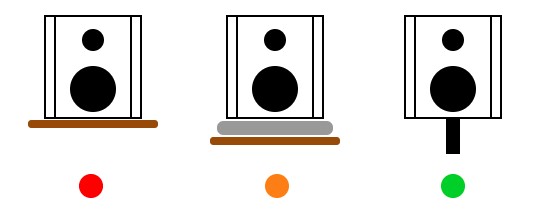
If you're just starting to build up your studio, you may be tempted to bring in your biggest desk and place everything on it. This is something you should avoid if you can!
A speaker placed directly on a desk will reflect sound off the surface, particularly if it's placed at the bottom of a deep desk. It may also further disrupt the clarity of the sound through vibrating the desk as well.
If you can't avoid desk mounting your speakers, make sure to get a pair of isolating platforms to put underneath. These are typically made from thick, acoustic foam and sometimes even come free with a speaker set.
If you can, get some speaker stands so each one can be isolated properly, reducing the chances of unwanted reflections and vibrations compromising your sound.

Conclusion
In summary, many of us won't ever set foot in a perfect studio environment, let alone own one, so we need to work best with what we have.
You've probably noticed that most of the issues that arise are to do with bass frequencies, mainly due to the sheer size of them. A lot of these issues can be further alleviated with the use of acoustic treatment, which we'll explore in another article.
Even if we can't create the ideal monitoring environment for our music, and can't put our speakers where they ought to be, it's important to know how their placement may be affecting our sound.
For example, if we can't help but place our speakers right up against the back wall, it's useful to know what affect this will likely be having on our sound. Before reaching for the EQ to bring down our bass, we should remember that it could simply be the front wall acting as an 'amplifier'.
At the end of the day, it comes down to knowing your studio's little quirks in terms of frequency response, and how they may be 'distorting' your sound. This comes with time spent in the studio, constantly referencing other music, and testing your music on other soundsystems in parallel.
Don't be disheartened if you can't put your speakers where you need to, just focus on being creative and gradually improving your studio environment, and your own familiarity with it, over time!













